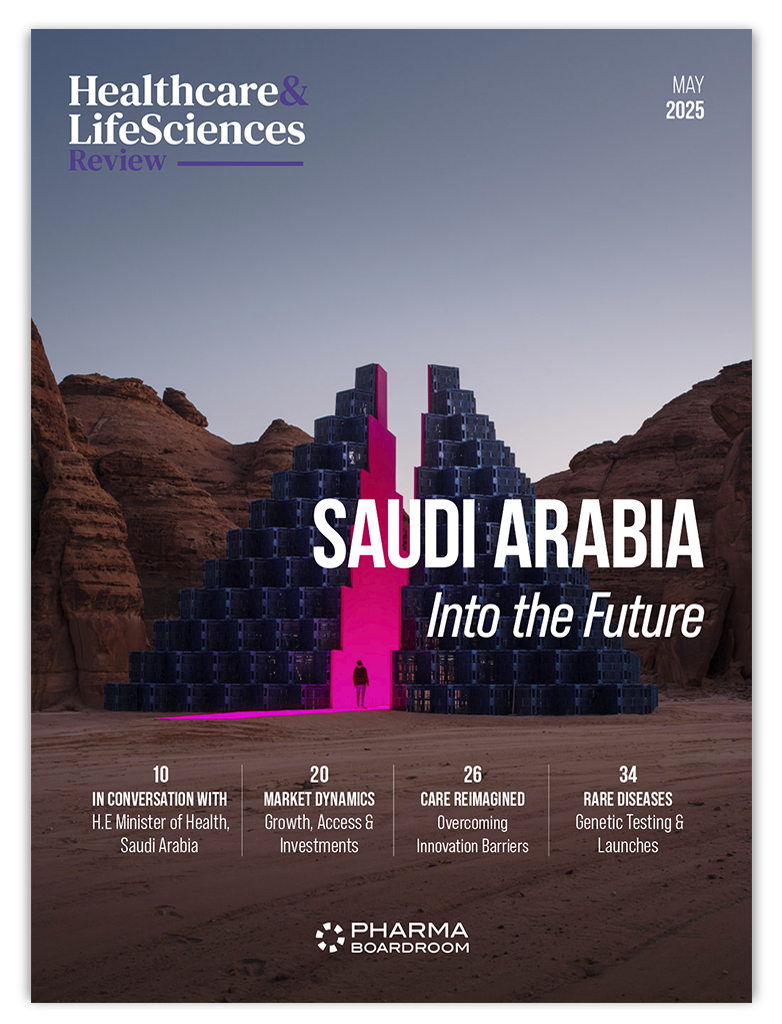Three leading lights from biopharma, policy, and research come together in Riyadh to discuss the current treatment and prevention landscape for Alzheimer’s disease.
As people live longer, the threat of age-related diseases deepens. Alzheimer’s, one of the cruellest such diseases, therefore represents an increasingly urgent public health challenge in terms of the impact on affected individuals and their caregivers as well as on society as a whole. Indeed, the global cost of dementia is projected to exceed USD 2.8 trillion by 2050 and – while the science to tackle these diseases is advancing – healthcare systems, regulatory bodies, and policymakers must act now to scale up infrastructure, expand early detection programs, and ensure equitable access to emerging therapies.
Alzheimer’s was a key topic for discussion at this month’s Global Healthspan 2025 Summit in Riyadh, Saudi Arabia. The event, sponsored by the Hevolution Foundation, aimed to promote interdisciplinary collaboration to tackle one of the key questions of our age – how to ensure people live longer, healthier lives? At the panel entitled ‘Aging and Alzheimer’s: Where is the Science, Where are we Heading?,’ Alzheimer’s was identified by Alzheimer’s Drug Discovery Foundation CEO Mark Roithmayr as “the greatest threat to longevity” today, and the next five to ten years as crucial in turning Alzheimer’s from a devastating disease into a manageable condition.
A New Treatment Paradigm
For the first time in two decades, new therapeutic options are now available for Alzheimer’s patients. Biogen and Eisai’s aducanumab was approved amid much fanfare by the FDA in 2021 under accelerated approval but is now largely discontinued due to controversy over its efficacy and safety. However, the same two companies’ lecanemab got the regulatory nod for early-stage Alzheimer’s in 2023, followed by Eli Lilly’s donanemab in 2024. Both of these drugs, known as monoclonal antibodies, have been shown to slow cognitive decline by targeting amyloid-beta plaques, a hallmark of Alzheimer’s pathology.
While there is much debate about the true efficacy and the costs of these treatments (regulators and health technology assessment bodies outside the US have been less quick to OK them), the fact that any new drugs for Alzheimer’s have made it this far is cause for celebration, as far as the panel was concerned. “In the past eight years, we’ve seen 96 Alzheimer’s drugs fail,” noted Fraser Hall, President and Head of the Intercontinental Region at Biogen. “The fact that we now have two on the market is a major advance. They’re the first crack in the door, opening up funding, research, and new possibilities.”
UC Berkeley’s Dr Andrew Dillin, whose lab has long been able to cure or delay Alzheimer’s in mice models, has been at the forefront of the challenging translation of those methods to humans. He agreed with Hall that the new approvals represent a major breakthrough for what is to come. “For years, I showed my students charts of failed Alzheimer’s trials”, he said. “Now, we finally have something that works. The door has been opened—we just need to push further.”
Weight Loss Drugs to the Rescue?
Then there are potential applications for new drugs developed in other disease areas. Glucagon-like peptide-1 (GLP-1) receptor agonists, for example, today primarily used for type 2 diabetes and obesity, are being investigated for their neuroprotective properties. Drugs like semaglutide (Ozempic, Wegovy) have seen unprecedented levels of global uptake as “miracle” weight-loss solutions, but have also shown promise in reducing neuroinflammation and may play a role in preventing or treating Alzheimer’s disease.
“GLP-1 drugs affect whole-body physiology,” said Dillin. “I wouldn’t be surprised if they help with Alzheimer’s by alleviating vascular issues. We may soon see patients taking both GLP-1 drugs and monoclonal antibodies for synergy.”
Ongoing clinical trials are evaluating the efficacy of semaglutide in patients with early Alzheimer’s, with results anticipated in the near future.
It’s In the Blood
Then there are new frontiers in early detection and diagnosis. Blood-based biomarkers aim to identify specific proteins or genetic markers associated with Alzheimer’s, offering a less invasive and more accessible alternative to current diagnostic methods, like PET scans.
“PET scans are expensive and limited,” said Biogen’s Hall. “Blood-based biomarkers could allow primary care doctors to pre-screen patients, catching Alzheimer’s earlier and at a lower cost.”
While blood tests alone do not diagnose Alzheimer’s, they provide crucial evidence that can support a diagnosis, especially in individuals with mild cognitive impairment or early-stage memory loss.
Initiatives like the Diagnostic Accelerator, funded by the Alzheimer’s Drug Discovery Foundation and Gates Ventures, are supporting the development of innovative biomarkers, including blood-based and digital tools, to improve early detection and monitoring of Alzheimer’s disease.
Rolling them out globally and ensuring seamless adoption within clinical practice will require overcoming significant educational, regulatory, and logistical obstacles, but they represent an important new item in the toolkit.
Combinations & Collaborations
The panel agreed that with no miracle cure for Alzheimer’s in sight, the future of Alzheimer’s treatment is likely to involve personalised approaches that combine multiple therapies targeting different aspects of the disease.
“Right now, Alzheimer’s drugs are still constrained, but in five years, third-generation treatments will enable more personalised medicine,” said Hall. “We won’t have a one-hit cure,” agreed Dillin. “The future lies in combination therapies addressing multiple pathways—monoclonal antibodies, aging biology interventions, and lifestyle modifications.”
The combinations and collaborations necessary to truly tackle Alzheimer’s extend beyond therapies to the broader ecosystem. As Hall posited, “We are so chronically underprepared for what is required to act on this. There is no miracle drug coming. We have to build an entire system—medical, economic, and social—to handle the burden of Alzheimer’s in aging populations.”


